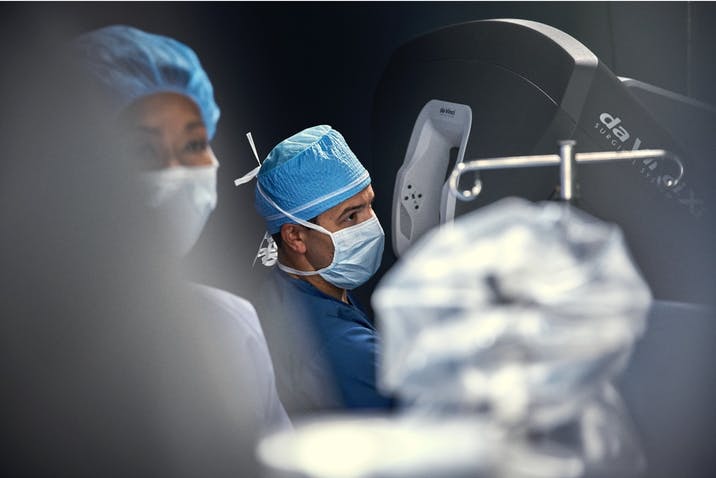Your kidneys filter blood to remove waste and extra water that is then sent through the ureter tubes to your bladder as urine. When the connection point between the kidney and ureter tube (called the ureteropelvic junction or UPJ) becomes blocked, urine builds up in the kidney, which may cause pain or infection.
Kidney blockage at the UPJ is typically congenital, meaning children are born with it. About one in 1,500 children are born with this problem. Although less common, a UPJ obstruction can also develop in adults due to surgery, kidney stones or swelling in the upper urinary tract.
Symptoms of UPJ blockage may include back pain, kidney stones, vomiting, infection with fever, and bloody urine.1
Understanding your options
To allow urine to flow again, doctors may need to remove the UPJ blockage and expand the connection between the kidney and ureter. There are three main surgical options for a UPJ obstruction: endopyelotomy, open pyeloplasty, and minimally invasive pyeloplasty.
In an endopyelotomy procedure, a doctor threads an instrument up through the bladder and ureter into the kidney junction to cut or burn away blockages.
During pyeloplasty surgery, the surgeon detaches the ureter and removes any blockage, such as a too-narrow junction, scar tissue, or kidney stones. The surgeon then reattaches the ureter to the kidney so that urine can drain into the bladder.
Surgeons can perform pyeloplasty using open surgery or a minimally invasive approach. Traditional open surgery requires an incision long enough for surgeons to look directly at the kidney, junction, and ureter while performing the surgery using hand-held tools.
There are two minimally invasive pyeloplasty options: laparoscopic surgery and robotic-assisted surgery (possibly with da Vinci technology). Both are both performed through a few small incisions. To perform a laparoscopic pyeloplasty, surgeons use special long-handled tools while viewing magnified images from the laparoscope (camera) on a video screen.
Resources for learning more
Pyeloplasty surgery brochureRead this brochure to help enable meaningful and informed conversation with your doctor about different options. | Urologic surgery with the da Vinci systemRobotic-assisted surgery with da Vinci technology is used in many different types of procedures by urology surgeons. |
1. What Is Ureteropelvic Junction Obstruction? Urology Care Foundation. Web. 14 May 2020



